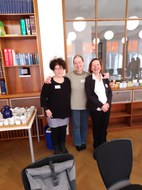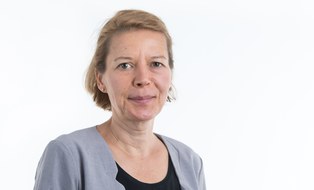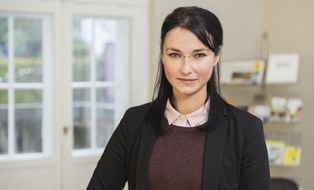Genderinklusive Kommunikation
Mit der Änderung des Personenstandsgesetzes, das neben den Eintragungen „männlich“, „weiblich“, „ohne Angabe“ auch die Eintragung „divers“ zulässt, wurde bereits 2018 mit einem binären Geschlechtersystem gebrochen. Um all jene Geschlechter und weiterführend Identitäten gleichermaßen sichtbar und wertschätzend anzusprechen, bedarf es eines sensiblen Umgangs mit Sprache und Bild. Genderinklusive Kommunikation ergibt sich so als einer der vielen Schritte auf dem Weg zu einer TIN*klusiven, diskriminierungsarmen und vielfaltsfördernden Universität.
Um Sie beim Gebrauch genderinklusiver Sprache zu unterstützen, wurde der vorliegende Leitfaden für genderinklusive Kommunikation in einem weitreichenden, partizipativen Prozess an der TU Dresden entwickelt. Dieser dient als verbindliche Grundlage für die externe und interne Kommunikation im Hochschulalltag.
Dabei sollen für den Sprachgebrauch an der TU Dresden insbesondere neutrale Formulierungen (z. B. Studierende, Lehrende) sowie der Gender-Doppelpunkt (z. B. Professor:innen, Kolleg:innen) genutzt werden. Im gendersensiblen Umgang mit Sprache und Bild sind Ihnen allerdings keine kreativen und zugewandten Grenzen gesetzt.
"Dem Geschlecht gerecht" Leitfaden zur genderinklusiven Kommunikation (Herausgabe 2021 PDF-Datei)
Für Fragen, Hinweise oder Kommentare können Sie uns gern ansprechen:
 © BGFB
© BGFB
Büro der Gleichstellungsbeauftragten der TUD
Eine verschlüsselte E-Mail über das SecureMail-Portal versenden (nur für TUD-externe Personen).
Besuchsadresse:
Nöthnitzer Straße 43, Raum 117
01187 Dresden
Postadresse:
Technische Universität Dresden Büro der Gleichstellungsbeauftragten der TUD Helmholtzstraße 10
01069 Dresden
Öffnungszeiten:
- Montag bis Freitag:
- 09:00 - 12:00
- Montag:
- 09:00 - 12:00
 © Michael Kretzschmar
© Michael Kretzschmar
Dr. phil. Jutta Luise Eckhardt
Gleichstellungsbeauftragte der TU Dresden
Eine verschlüsselte E-Mail über das SecureMail-Portal versenden (nur für TUD-externe Personen).
Besuchsadresse:
VG 3, Raum 120 Nöthnitzer Straße 43
01187 Dresden
Deutschland
Sprechzeiten:
- Montag:
- 15:00 - 17:00
- Donnerstag:
- 15:00 - 17:00
 © Crispin Mokry
© Crispin Mokry
Anja Wiede
Ansprechperson bei Belästigung, Diskriminierung und Gewalt
Eine verschlüsselte E-Mail über das SecureMail-Portal versenden (nur für TUD-externe Personen).
Besuchsadresse:
M13 Mensa und TUD, Raum 6-234 Mommsenstr. 13
01069 Dresden
Der Zugang zu meinem Büro ist leider nicht barrierearm möglich. Geben Sie mir gern Bescheid für etwaige Bedarfe.
Universitäten mit Sprachleitfäden
Hier finden Sie eine Liste von Universitäten mit Sprachleitfäden.
Der Leitfaden aus linguistischer Perspektive
Dominik Hetjens und Marlene Rummel, wiss. Mitarbeiter bzw. Mitarbeiterin der Professur für germanistische Linguistik und Sprachgeschichte haben exklusiv für culTUre ihre Perspektiven in einem kompakten Beitrag zusammengefasst.
Genderinklusive Sprache und barrierefreie Dokumente
Dipl. Päd. Anja Winker (TU Dresden) diskutiert rechtliche Grundlagen der Barrierefreiheit sowie Definitionen der Begriffe Inklusion vs. Integration. Auch in barrierefreien Dokumenten ist eine gendergerechte Sprache nötig und problemlos möglich und es hilft allen Nutzer:innen, solche Unterlagen in einem barrierefreien Format zur Verfügung zu stellen. Eine Aufzeichnung des Vortrags finden Sie hier.
Publikationen zum Thema
Dissertation von Lovis Noah A. S. Cassaris (PDF)
Rechtsgutachten zur Geschlechtergerechten Amtssprache
Im Dezember 2021 hat Prof.in Dr.in Ulrike Lembke (Humboldt Universität Berlin)im Auftrag der Stadt Hannover ein Rechtsgutachten zur Geschlechtergerechten Amtssprache erstellt. Die juristische Expertise gibt eine Einschätzung der Rechtswirksamkeit von Handlungsformen der Verwaltung bei Verwendung des Gendersterns oder von geschlechtsumfassenden Formulierungen.
Prof.in Dr.in Lembke kommt in ihrem Gutachten zu dem Ergebnis, dass die Verwendung geschlechtergerechter Sprache inklusive des Gendersterns keinen (negativen) Einfluss auf Wirksamkeit oder Verbindlichkeit von Verwaltungshandeln entfalten kann, sondern umgekehrt dessen Verfassungskonformität erhöht.
Sie finden das Gutachten in voller Länge hier: https://www.hannover.de/Service/Presse-Medien/Landeshauptstadt-Hannover/Aktuelle-Meldungen-und-Veranstaltungen/Gutachten-bestätigt-Genderstar-verwirklicht-Verfassungsauftrag
Eine Zusammenfassung der wesentlichen Ergebnisse gibt es hier: https://www.rewi.hu-berlin.de/de/lf/ls/lbk/gutachten-genderstar-amtssprache_ergebnisse_lembke2021.pdf
